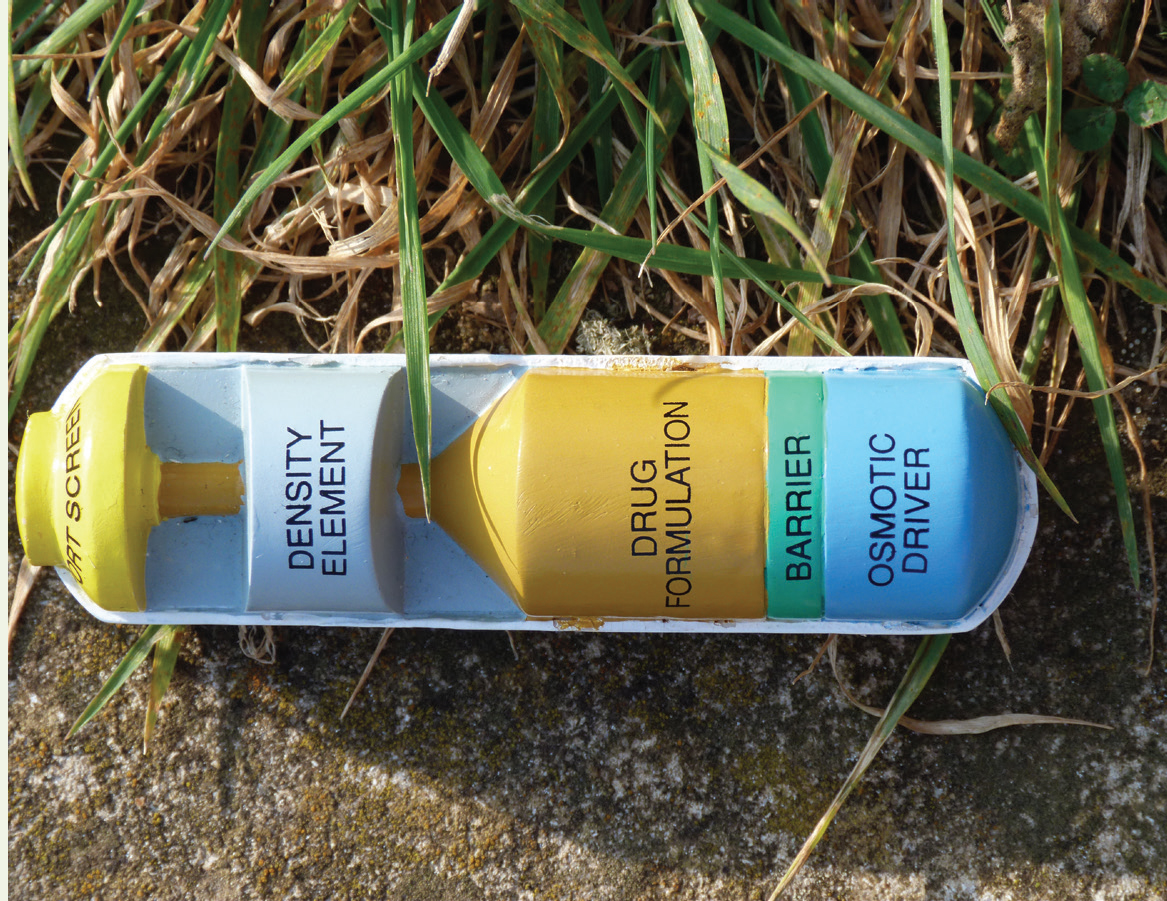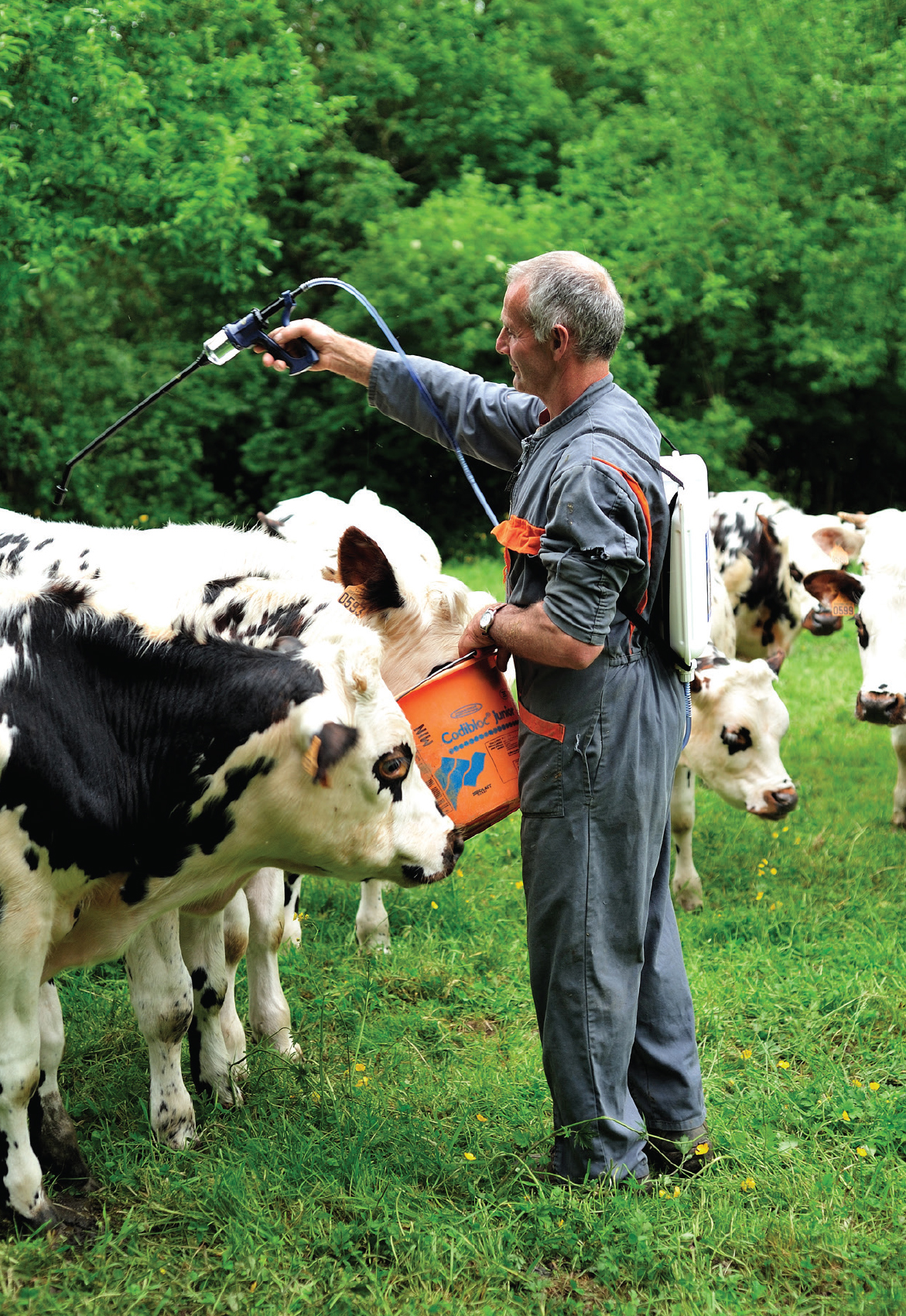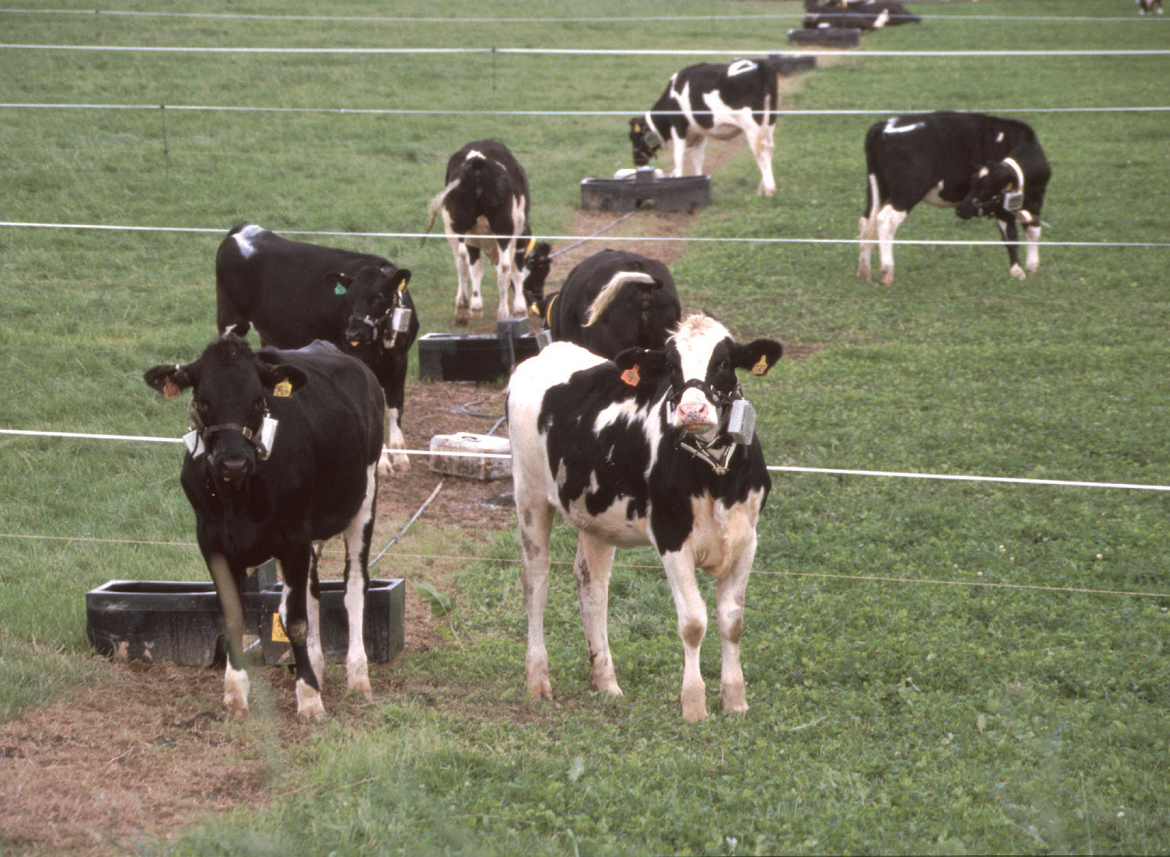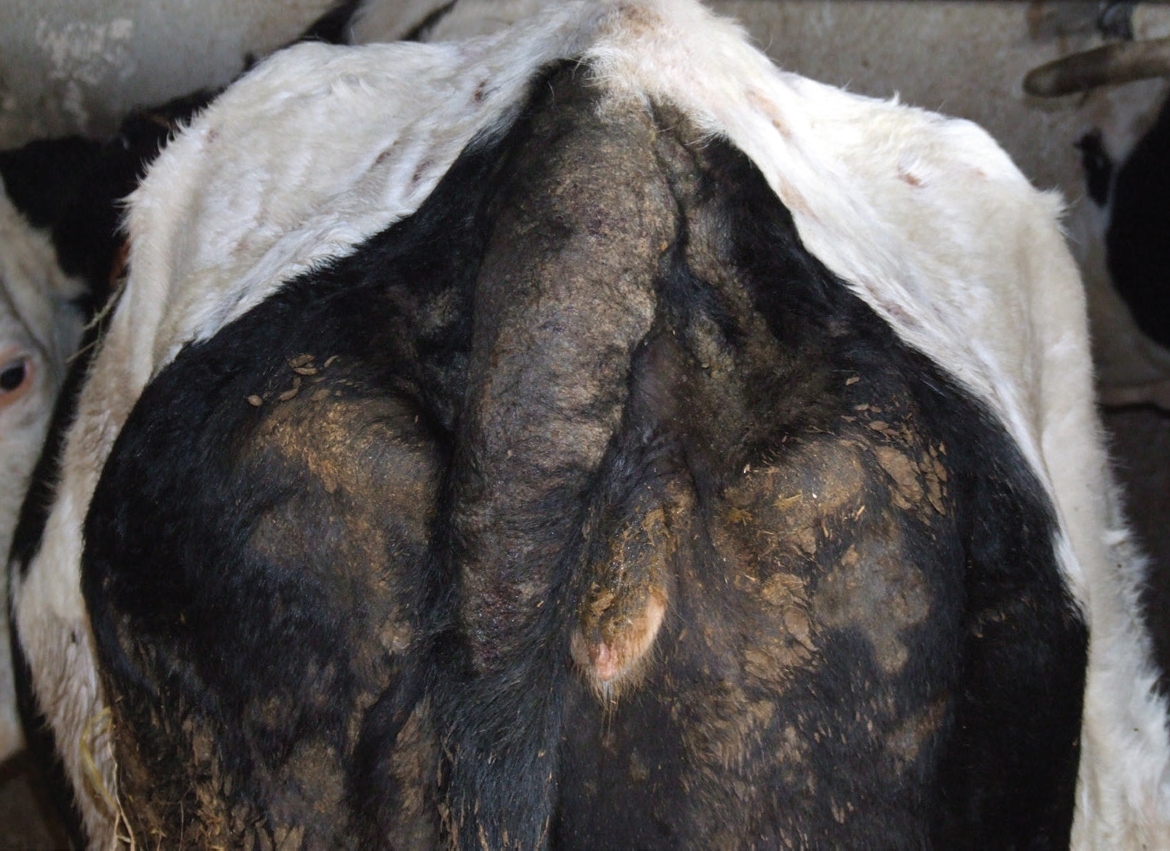The treatment of domestic animals with overt parasitism stretches back over hundreds, maybe thousands of years and, until the 20th century, was largely based on extracts and concoctions derived from various naturally occurring plants, minerals or other materials (Vivash Jones, 2021). Evidence for the efficacy of these remedies appears to have been largely anecdotal and there is little evidence for any evaluations that would equate to the rigors of the experimental protocols that are required for the registration of modern veterinary pharmaceuticals. For those who harp back to ‘the good old days’, it is worth reading the harrowing accounts of veterinarians faced with cattle with clinical lungworm disease and their helplessness in providing even basic supportive treatment, never mind in eliminating the parasite (Taylor, 1951). It is also worthy of note that many treatments, particularly those comprising raw chemicals, such as arsenic or turpentine, were nearly as toxic to the animal as to the parasites and, sadly, fatalities in treated stock were not uncommon (Clunies Ross and Gordon, 1936).
The era of ‘modern’ parasiticides
The introduction of relatively more efficacious and safe parasite treatments can conveniently be traced from the early 1960s, though many of the older treatments were still in use at this time. A book in which the anthelmintic literature was reviewed, published just 60 years ago in 1963, for example, listed copper sulphate, phenothiazine, toluene, carbon tetrachloride, hexachloroethane and organophosphates among the available anthelmintics for cattle and sheep (Gibson, 1963). Only thiabendazole, which had been introduced in 1961, is recognisable as representing modern compounds.
Arguably, the ‘Golden Age’ for parasiticides lasted for about 50 years from the 1960s. During this time a number of anthelmintics, flukicides and ectoparasiticides were developed for use in farm animals. High levels of efficacy (>95%) against the target parasites was initially achieved with these compounds. After generating the initial obligatory efficacy and safety data for these compounds, product development frequently focused on ease of use, given that handling of farm stock can be not only time-consuming and labour intensive, but also stressful and potentially dangerous for both the stock and the handlers.
Oral administration (drenching) was the standard method of giving anthelmintics, while topical applications were standard for ectoparasiticides; the former is still widely used in sheep, but is much less popular for cattle nowadays. To minimise handling and facilitate administration, a number of paths were followed, including:
- Ease of administration (pour-ons, injectables; in-feed – less common for ruminants)
- Long-acting (boluses and injections) (Figure 1)
- Combinations (fluke and wormers).

Though such developments greatly benefited farmers, the downside may be that their convenience made it too easy to treat animals to avoid the negative effects of parasitism. Furthermore, some of these formulations increased the exposure of parasites to discriminating concentrations of the active ingredients, either through their long action or through incidental exposure when targeting different parasites (combinations). In addition, some formulations, for example, topical anthelmintics, though very easy to administer and effective (Figure 2), could lead to inconsistent pharmacokinetic and efficacy profiles among treated animals (Eagleson and Allerton, 1992) and passive transfer of product between animals could occur (Bousquet-Mélou et al, 2004), either of which could lead to sub-optimal concentrations of the anthelmintics – a risk factor for resistance (Smith et al, 1999; Knapp-Lawitzke et al, 2015).

Parasiticides in applied research
The value of such products was not confined to on-farm treatment and control of parasitism as they proved to be valuable as adjuncts to applied research, particularly under field conditions, where comparisons between treated and untreated animals provide valuable insights into many facets of parasitism in cattle and sheep. Previously, gathering such data from the field for parasitic gastroenteritis, for example, could only be achieved through intricately planned and logistically demanding rearing and maintaining ‘worm free’ animals at pasture (Spedding, 1954). However, the introduction of thiabendazole provided a conduit to a greater understanding of diverse aspects of parasitic gastroenteritis in sheep, including epidemiology, pathogenicity and impacts on performance (Brunsdon, 1964; 1966). Rafoxanide and then triclabendazole (TCBZ) permitted the development of strategic control approaches for fasciolosis (Whitelaw and Fawcett, 1981; Parr and Gray, 2000). Effective insecticides and acaricides were not only helpful in studying the impact of various economically important ectoparasites, such as sheep scab (Psoroptes ovis) and warble flies (Hypoderma spp.), but also proved valuable in eradication programmes (Kirkwood, 1986; Boulard, 2002).
The hitherto unprecedented broad spectrum macrocyclic lactone (ML) parasiticide ivermectin, first introduced in the early 1980s, which is effective against multiple genera of endo- and ecto-parasites, facilitated pure and applied research, not only into treatment and control, but also into various aspects of epidemiology, pathogenesis, immunity, host behaviour (Figure 3) and diagnostics in a wide range of parasitic diseases, particularly in cattle. Examples include:
- Parasitic gastroenteritis (Jacobs et al, 1987; Forbes et al, 2000) and lungworm (Dictyocaulus viviparus) (Taylor et al, 1990) individually or collectively (Taylor et al, 1986; Jacobs et al, 1989)
- Sarcoptic, chorioptic (Figure 4) and psoroptic mange (Wright and Guillot, 1984; Stromberg and Guillot, 1989; Rehbein et al, 2003; Forbes et al, 2007)


The macrocyclic lactones introduced after ivermectin have reinforced or added to our knowledge of ruminant parasitism, for example:
- Doramectin and moxidectin in the control of sheep scab (Psoroptes ovis) (Bates et al, 1995; O’Brien et al, 1996)
- Eprinomectin and parasitism in lactating dairy cows (Forbes et al, 2004; Rehbein et al, 2005; Fiedor et al, 2009; Charlier et al, 2009; Verschave et al, 2014).
Current issues with parasiticides
Resistance
While there is an extensive array of licensed, marketed parasiticides available for ruminants, they are based on a relatively small number of active ingredients. In the UK, for example, there are only three anthelmintic action classes for the treatment and control of parasitic gastroenteritis (and lungworm) in cattle: macrocyclic lactones, benzimidazoles and levamisole, with the last seemingly not widely available or used. Two other actives are available for sheep, monepantel and derquantel, the latter in combination with a macrocyclic lactone. In all cases, except derquantel (at the time of writing), resistance has evolved to these compounds within a relatively short period after introduction (<10 years), the most recent example being resistance to monepantel, first documented 3–4 years following its introduction (Scott et al, 2013; Mederos et al, 2014). Although somewhat less-well documented and arguably lagging behind the status in sheep, anthelmintic resistance in the common temperate cattle nematodes, Ostertagia ostertagi and Cooperia oncophora, and the more tropical species, Haemonchus placiei, has also been confirmed (Baiak et al, 2019).
The situation is little better with other parasiticide groups. Triclabendazole resistance (TCBZ-R) in F. hepatica has been diagnosed in various countries around the world, the first report appearing in 1995 in Australia, followed by one in Scotland in 1998 (Fairweather et al, 2020). TCBZ-R appears to be quite widespread in sheep farms in the UK (Kamaludeen et al, 2019). Examples of resistance amongst the few ectoparasiticides groups available for ruminants in the UK, include resistance to pyrethroids in biting lice of cattle (Bovicola bovis) (Sands et al, 2015) and macrocyclic lactone-resistance in P. ovis in sheep (van Mol et al, 2020), while in Australia, resistance to the insect growth regulators (IGR) cyromazine and dicyclanil, which are used to prevent fly-strike, is well documented (Sales et al, 2020).
Environmental impact
It is accepted that virtually all compounds that are effective in the treatment of parasites can also harm non-target species (commonly arthropods) within similar taxonomic groups because the pharmacological targets are typically metabolic or neuroendocrine pathways that are common to both free-living and parasitic organisms. Such toxicity does not predict ecological impacts (Cairns, 1992), which requires an altogether much more detailed study incorporating appropriate spatial and temporal scales within the farm environments where potential interactions take place. Important variables that need to be considered include:
- Non-target species, population biology, ecology, phenology and behaviour
- Livestock systems and management
- Parasiticide use patterns (Sherratt et al, 1998).
These collectively determine potential exposure of non-target fauna and possible outcomes (Wratten and Forbes, 1996).
Among the array of current veterinary parasiticides that are used on livestock farms, the macrocyclic lactones, pyrethroids and, to a lesser extent, flukicides, have received most attention (Gilbert et al, 2019), with by far the greatest amount of research being conducted on ivermectin, which is used as a ‘standard’ in many studies (Römbke et al, 2009). The main focus has been on effects of faecal parasiticide residues on the bovine dung fauna (particularly larval insects) and functionality (dung degradation). While the results from most small-scale, short-term toxicology experiments are reasonably consistent, outcomes from large-scale field studies conducted over a year or more on livestock farms are much more variable and the results equivocal (Wall and Beynon, 2012; Forbes, 2021). Nonetheless, potential or perceived environmental impact has become an important discriminator in parasite control and the choice of products that are used.
Prospects for ruminant parasiticides
Resistance to most of the available compounds in many of the target parasites is rife and there is only limited evidence for reversion to susceptibility (Leathwick et al, 2015). Previously, it has been assumed that the pharmaceutical industry would continue to generate new action classes that would take the place of those that no longer work, but this is no longer the case. There are several reasons for this, largely business-led and related to the much more attractive small-animal markets, particularly for ectoparasiticides to control fleas and ticks and combination broad-spectrum parasiticides for simultaneous treatment of parasitic nematodes. Disincentives for commercial development of new ruminant parasiticides include:
- Time, costs and risks (of failure) to satisfactorily generate data to address:
- Regulatory requirements for establishing meat and milk withdrawal periods
- Environmental impact assessment (EIA) to the satisfaction of regulatory authorities
- Contrasting views on combination products by regulatory authorities (pet vs. farm)
- Relatively small potential profit margins (compared with the pet market)
- Active discouragement by organisations and individuals of the use of parasiticides in general and some product classes in particular, thus restricting sales opportunities.
New regulatory requirements may also account for the loss of some previously available products as the investment in renewing a marketing authorisation cannot be justified. Extending the range, claims and formulations of molecules that are already licensed and for which some regulatory files already exist may yield some useful additions to product ranges (Canton et al, 2021). Additionally, the registration of combinations of existing compounds should be less demanding than with new molecules and there may be additional benefits in resistance management (Barnes et al, 1995). Combinations of flukicides that are synergistic, extending their activity to juvenile Fasciola hepatica, are potentially very useful in the treatment and control of fasciolosis (Hutchinson et al, 2009).
Regulatory hurdles may not apply equally to all potentially new parasiticides, for example, unrefined essential oils or proven herbal remedies (Ellse and Wall, 2014; French, 2018) might be categorised differently and be spared some of the requirements for registration of chemically synthesised pharmaceuticals.
Make best use of available parasiticides
Even if the collective efforts using non-chemical control are successful, it is still inevitable that sometimes clinical parasitism will occur and treatment will be required on welfare grounds alone. It may also be that for logistical or management reasons, some products will still be used prophylactically or strategically. For instance, particularly in extensive systems when regular observation of stock may be challenging, then, for example, prophylactic treatment with a long-acting compound, eg cyromazine or dicyclanil may be indicated as prevention of fly-strike, a disease of sheep with profound welfare implications (Wall, 2012). Even in such systems, there are options that can be considered in order to mitigate selection for resistance (Kotze and James, 2022).
Given the likely paucity of new compounds, veterinarians and farmers will have to accept lower levels of efficacy than the current standards of ≥95% for nematodes and most trematodes and ≥99% for most ectoparasites. Temporary relief from resistance can be achieved using additive or synergistic drug combinations, ideally (but unrealistically for older compounds) before widespread resistance has developed (Barnes et al, 1995; Leathwick, 2012). However, continual sub-optimal dosing is a risk factor for resistance (Fissiha and Kinde, 2021), so, unless use patterns are changed, even these tactics will likely eventually fail.
Although targeted group treatments are likely to continue, either through necessity or convenience, or both, an approach that limits selection for resistance is targeted selective treatment, in which only individual animals are treated. This is most commonly to benefit stock that are suffering the negative effects of parasites, but can also be used to target animals that are responsible for hosting a high proportion of a parasite population and hence acting as ‘super-hosts’ and/or transmitters (Charlier et al, 2014; Miraballes et al, 2018). Targeted selective treatment uses the concept of refugia, where at any one time, a significant proportion of the target parasite population is not exposed to discriminating doses of parasiticides. While resistance management may be the main incentive for targeted selective treatment, by default, such treatment regimens also enhance the refugia for susceptible non-target organisms, notably dung insects, thus enhancing the benefits of selective treatment (Cooke et al, 2017; Forbes, 2019).
Most of the research on targeted selective treatment has been conducted in the control of parasitic gastroenteritis in sheep and cattle and most results show that animal performance is similar under targeted selective treatment and more conventional group treatments (Greer et al, 2009; Jackson et al, 2017) and also that selection for resistance is reduced (Kenyon et al, 2013). Key to targeted selective treatments is the use of appropriate markers and these can vary according to the characteristics of the parasites being targeted, but also include components such as convenience, costs etc. In young cattle and sheep in temperate regions, the most consistent results for determining the impact of (subclinical) parasitic gastroenteritis have been achieved using average daily liveweight gain alone (Busin et al, 2014; Merlin et al, 2018), or in an algorithm (the Happy Factor™) that includes a calculation of feed availability and intake (McBean et al, 2021). The value of growth rate as a marker for targeted selective treatment in both lambs and calves has been confirmed in modelling studies too (Berk et al, 2016; Laurenson et al, 2016).
Conclusions
The central role that parasiticides have taken in the treatment and control of the parasites of farm animals, particularly ruminants, since the 1960s is coming to an end as a consequence of the increasing prevalence of resistance among many parasite species to most of the commonly used products. In tandem, at least partly due to commonly perceived environmental impacts, the strategy of many organisations, companies, veterinarians and farmers is to minimise or eliminate the use of parasiticides, certainly as routine whole-group treatments. This climate is a strong disincentive for the development of novel parasiticides by the pharmaceutical industry, hence it is unlikely that new products will appear in the near future, other than perhaps some combinations of individual compounds that are already registered.
The emphasis in parasite control must therefore continue to shift towards the complementary strategies and actions that can help mitigate the impact of parasitism in farm stock (Stear et al, 2007; Hoste and Torres-Acosta, 2011), including selective breeding for resistance/resilience, optimal nutrition and grazing management, all supported by suitable, evidence-based monitoring and diagnostics (Forbes and Ellis, 2023; Sabatini et al, 2023). In addition to the vaccine against lungworm, it is to be hoped that a range of novel vaccines against parasites and vector-borne infections will emerge from the massive amount of research that has been conducted over recent decades (Knox and Redmond, 2006; de la Fuente et al, 2023). Another potential avenue for novel approaches is biological control, for example, nematophagous fungi, which are already commercially available in some countries; entomopathogenic fungi for the control of certain ectoparasites and fostering species that can help reduce populations of free-living stages of parasites and vectors.
KEY POINTS
- There are relatively few different anthelmintic and ectoparasiticide classes that are registered for use in ruminants.
- Resistance to the commonly used parasiticides is present in many important parasites of sheep and cattle.
- Compounds with insecticidal activity have the potential to harm non-target species of arthropods, particularly those associated with dung.
- The prospects for new products being registered are poor, as the regulatory hurdles are considerable, the threat of resistance is high and the use of parasiticides is being actively discouraged or proscribed by individuals and organisations.
- Adoption of complementary practices is needed to compensate for the diminishing role of parasiticides in parasite control.


